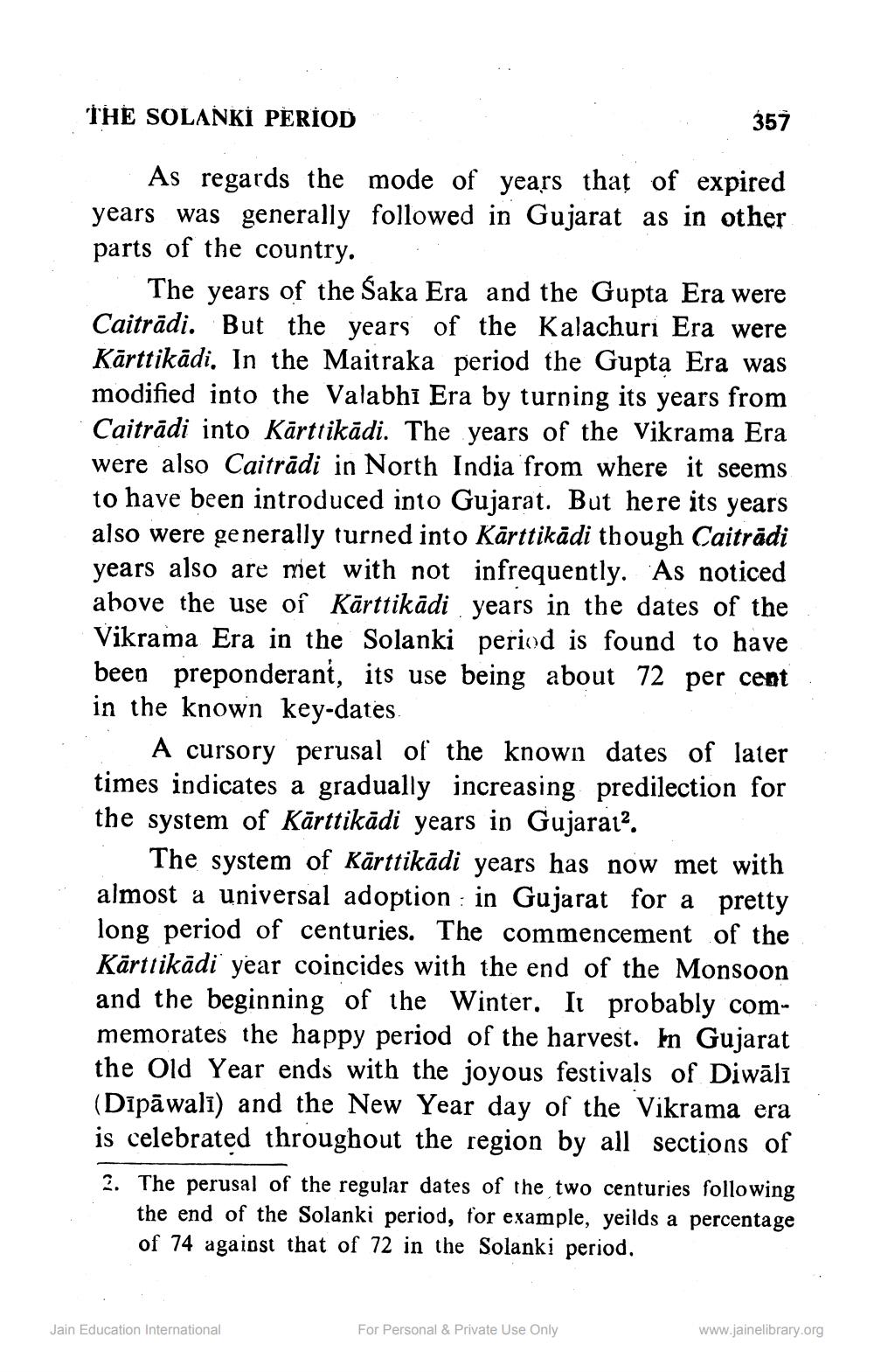________________
THE SOLANKİ PERIOD
357
As regards the mode of years that of expired years was generally followed in Gujarat as in other parts of the country.
The years of the Saka Era and the Gupta Era were Caitrādi. But the years of the Kalachuri Era were Kārttikādi. In the Maitraka period the Gupta Era was modified into the Valabhi Era by turning its years from Caitrādi into Kārttikādi. The years of the Vikrama Era were also Caitrādi in North India from where it seems to have been introduced into Gujarat. But here its years also were generally turned into Kārttikādi though Caitrādi years also are met with not infrequently. As noticed above the use of Kārttikādi years in the dates of the Vikrama Era in the Solanki period is found to have been preponderant, its use being about 72 per cent in the known key-dates.
A cursory perusal of the known dates of later times indicates a gradually increasing predilection for the system of Kärttikādi years in Gujarai?.
The system of Kārttikādi years has now met with almost a universal adoption in Gujarat for a pretty long period of centuries. The commencement of the Kārttikādi year coincides with the end of the Monsoon and the beginning of the Winter. It probably commemorates the happy period of the harvest. In Gujarat the Old Year ends with the joyous festivals of Diwāli (Dīpāwalī) and the New Year day of the Vikrama era is celebrated throughout the region by all sections of 2. The perusal of the regular dates of the two centuries following
the end of the Solanki period, for example, yeilds a percentage of 74 agaiost that of 72 in the Solanki period.
Jain Education International
For Personal & Private Use Only
www.jainelibrary.org




